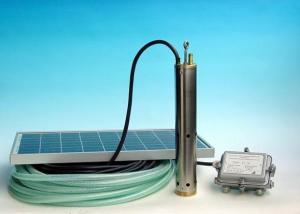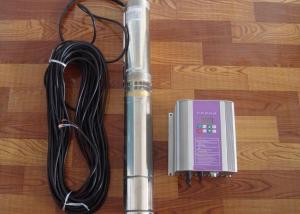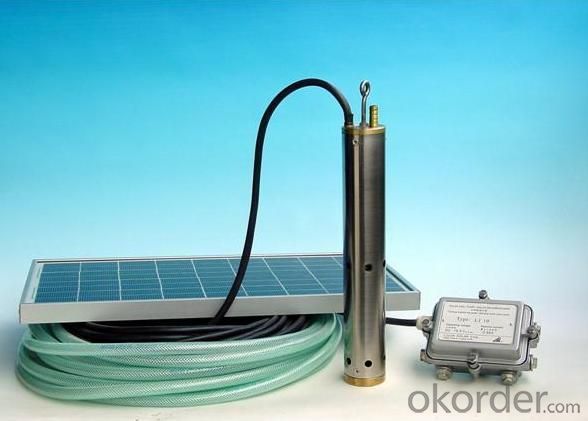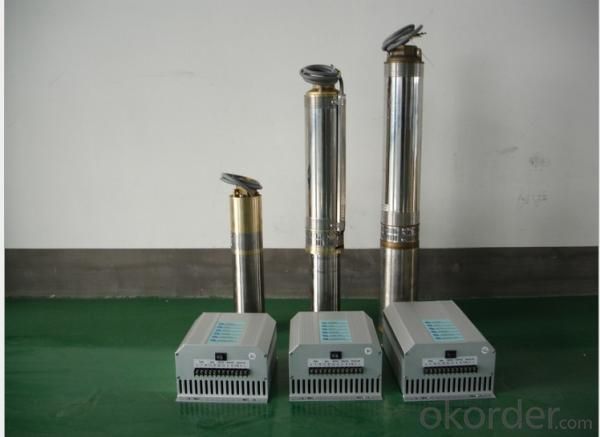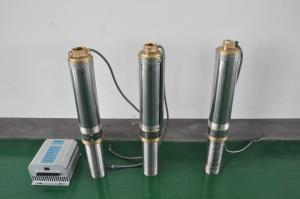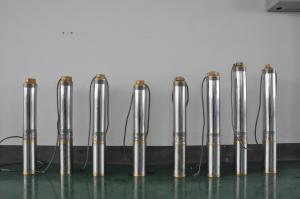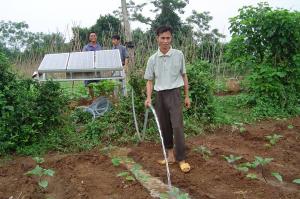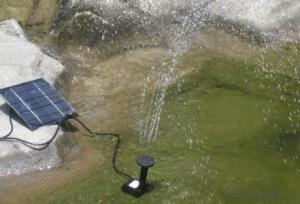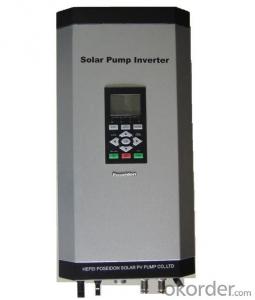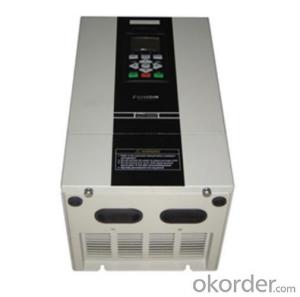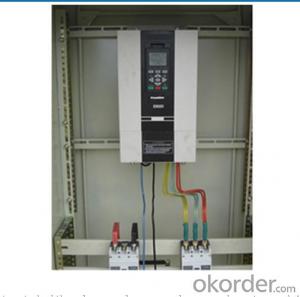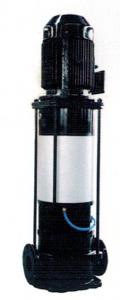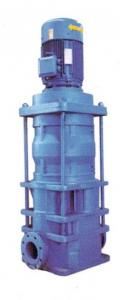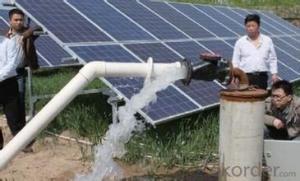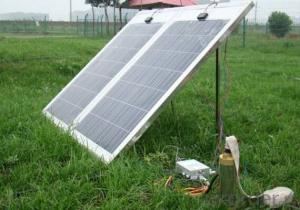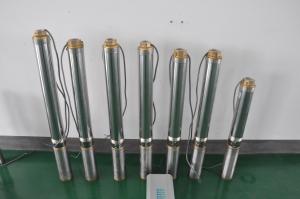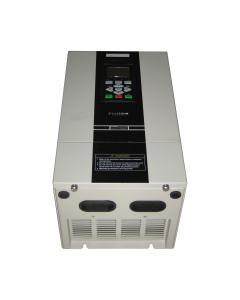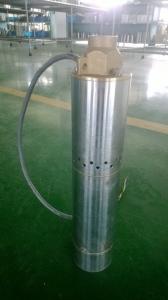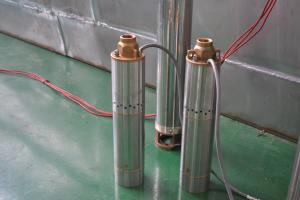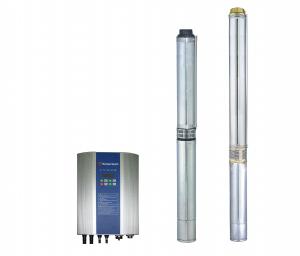Well Solar Pump SHP1.38/45-36/320
- Loading Port:
- China Main Port
- Payment Terms:
- TT or LC
- Min Order Qty:
- 10 Unites unit
- Supply Capability:
- 10000 Unites unit/month
OKorder Service Pledge
OKorder Financial Service
You Might Also Like
Specifications of Solar Pumps
Solar Pump is a pumping device powered by solar energy, which consists of solar pumping inverter and pump, and is mainly applied to agricultural irrigation, desert control, pasture animal husbandry, city waterscape, seawater desalination and fresh water supply, etc.
| Type | SHP1.38/45-36/320 | |||||
| Operation Voltage | 36V DC | |||||
| Power of Solar Cell | 320W | |||||
| Max.flow Rate | 1.38 M3/H | |||||
| Max.head | 45M | |||||
| Q=M3/H | 1.38-1.16-1.00-0.55 | |||||
| H=M | 1-20-30-45 | |||||
| Outlet Caliber | 20mm | |||||
| Pumps Diameter | 76mm | |||||
| Pumps Length | 370mm | |||||
| Weight | 5.90Kg | |||||
| Protection Level | IP68 | |||||
| Carton Size | 600×200×160mm | |||||
| 20GP Contain Number | 1100sets | |||||
Features of Solar Pumps
High efficiency& High reliability; Driven by PM. Brushless DC Motor; Minimum maintenance, long life& without watching; Powered by PV/Wind/Battery; All the necessary production; Environment friendly materials, lubricate without oil;
Applications of Solar Pumps
Village or family water supply; Animal drinking water and lives tock watering; Garden/Countryard Irrigation; Natatorinm/swimming pool
Water supply for bivouac or camping car; Water supply for remote areas
Automatic Control of Solar Pumps
Operate automatically & without watching; Protected from dry operation; Maximal Power Point Tracking (MPPT); Protected from dry operation;
New Technology of Solar Pumps
1. Application Innovation
The DC PM brushless motor has increased its efficiency up to 25% in comparison with traditional small asynchronous motor-25% PV Modules could be saved.
2. Technology Innovation(Patent)
Stator and rotor are sealed by environment friendly casting resin. The motor’s insulation resistance can be hold higher than 300MΩ, for more than 10 years. I t consumedly increased the security and reliability of the submersible motor.
3. Structure Novelty
Casting resin technology processed stator and rotao as well as the water lubricated bearing make the submersible pump environment friendly(no even one glob oil), easy to install and more reliability.
Packaging and Delivery of Solar Pumps
Solar Pumps are deliveried by sea. Carton Packaging. It should be noticed that the machine need to be place carefully and patiently.
Installation Pictures of Solar Pumps
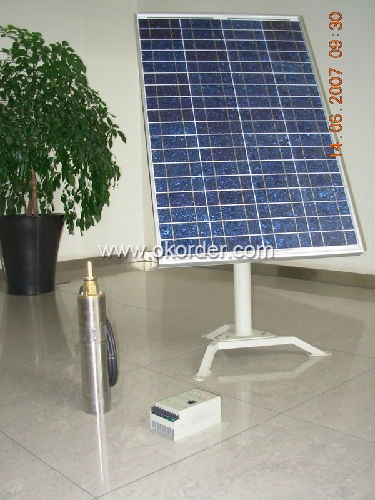
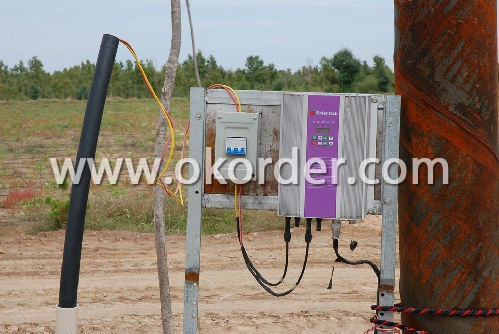
- Q: How does the voltage of the solar pump system affect its performance?
- The voltage of the solar pump system plays a crucial role in determining its performance. A higher voltage generally results in better performance and efficiency of the pump system. When the voltage of the solar pump system is increased, it directly affects the power output of the solar panels. This means that higher voltage allows for more power to be generated, which in turn leads to increased water flow and pressure from the pump. Consequently, a higher voltage can result in enhanced pumping capacity and faster water delivery, making the system more efficient. Additionally, a higher voltage helps to overcome losses that may occur due to long wire distances or resistance in the system. With increased voltage, there is less voltage drop, ensuring that the pump receives the necessary power to function optimally. However, it is important to note that the voltage of the solar pump system should be within the recommended range specified by the manufacturer. Exceeding the recommended voltage can potentially damage the pump or other components of the system. In summary, the voltage of the solar pump system directly affects its performance by influencing the power output, water flow, pressure, and overall efficiency of the system. Therefore, choosing the appropriate voltage for the specific requirements and ensuring it is within the manufacturer's recommendations is crucial for achieving optimal performance.
- Q: Can a solar pump be used in areas with limited access to water purification?
- Yes, a solar pump can be used in areas with limited access to water purification. Solar pumps are designed to draw water from wells, rivers, or other water sources and can be used to pump water for various purposes such as irrigation, livestock watering, or domestic use. While solar pumps alone do not purify water, they can help in accessing water from available sources. However, it is important to note that water from these sources may still need to be treated or purified using additional methods to make it safe for consumption.
- Q: What is the lifespan of a solar pump controller?
- The longevity of a solar pump controller can vary based on a number of factors, including the controller's quality, operating conditions, and maintenance. Typically, a well-crafted and adequately maintained solar pump controller can endure for approximately 10 to 20 years. However, it's important to note that controllers of lesser quality may have a shorter lifespan due to inferior materials or components. Moreover, operating conditions significantly influence the lifespan of a solar pump controller. Extreme temperatures, excessive moisture, and exposure to harsh elements all contribute to the controller's gradual deterioration. Therefore, it is advisable to install the controller in a protected environment and ensure proper ventilation to prevent overheating. To maximize the lifespan of a solar pump controller, regular maintenance is essential. This involves regular cleaning, checking for loose connections, and updating firmware and software as needed. Additionally, conducting routine inspections to detect any signs of wear or damage is crucial, as promptly addressing these issues can prevent further complications. In conclusion, the lifespan of a solar pump controller can range from 10 to 20 years, contingent upon factors such as quality, operating conditions, and maintenance. By properly caring for the controller and promptly addressing any concerns, its lifespan can be prolonged and the solar pumping system can operate efficiently.
- Q: Can a solar pump be used for water supply in refugee camps or temporary settlements?
- Yes, a solar pump can definitely be used for water supply in refugee camps or temporary settlements. Solar pumps are a sustainable and cost-effective solution for providing clean and reliable water access in remote areas that lack electricity infrastructure. They harness solar energy to power the pump, eliminating the need for fuel or electricity, making them ideal for off-grid locations like refugee camps. Solar pumps can be easily installed and maintained, ensuring a continuous and uninterrupted water supply, which is crucial for meeting the basic needs of the displaced populations.
- Q: What is the maximum flow rate of a solar pump?
- The maximum flow rate of a solar pump depends on various factors such as the size and capacity of the pump, the solar panel's power output, the intensity of sunlight, and the pumping system's efficiency. In general, solar pumps can have flow rates ranging from a few gallons per hour to several thousand gallons per hour. However, it is important to note that the maximum flow rate may not always be sustainable or practical for continuous operation, as it may require optimal conditions and high solar power availability. It is recommended to consult the manufacturer's specifications and guidelines to determine the maximum flow rate of a specific solar pump model.
- Q: Can a solar pump be used for rainwater harvesting or stormwater management?
- Certainly! Solar pumps have the ability to be utilized for rainwater harvesting as well as stormwater management. By harnessing the power of solar energy, these pumps offer an eco-friendly and cost-efficient solution for the pumping and control of water. They possess the capability to gather rainwater in storage tanks or reservoirs, enabling its usage in a variety of applications such as irrigation, domestic consumption, or the replenishment of groundwater. Furthermore, solar pumps can play a vital role in stormwater management by either removing excessive stormwater from flood-prone areas or diverting it towards infiltration systems to prevent erosion and runoff. The utilization of solar pumps in rainwater harvesting and stormwater management contributes to the conservation of water resources and reduces reliance on traditional energy sources.
- Q: How does the type of water source (lake, river, borewell) affect the performance of a solar pump?
- The type of water source, whether it is a lake, river, or borewell, can affect the performance of a solar pump in a few ways. Firstly, the depth and quality of water in each source can vary. For instance, a river may have a consistent flow of water, while a lake may have fluctuating water levels. Similarly, a borewell may provide water from deep underground. These factors can impact the efficiency and effectiveness of the solar pump, as it needs to be properly calibrated and designed to handle the specific characteristics of the water source. Secondly, the type of water source can also determine the presence of impurities and sediments. Rivers and lakes may have higher levels of sediments and debris, which can affect the pump's performance. In such cases, additional filtration or pre-treatment may be required to prevent clogging or damage to the pump. Lastly, the availability of sunlight can also be influenced by the type of water source. For instance, if a solar pump is installed near a heavily forested river, the shade from trees may reduce the amount of sunlight reaching the solar panels, thereby affecting the pump's efficiency. In contrast, a borewell or an open lake may provide more exposure to sunlight, resulting in better performance. Therefore, considering the type of water source is crucial in selecting and installing a solar pump, as it ensures that the pump is designed and optimized to function effectively in that specific environment.
- Q: How much water can a solar pump supply?
- The amount of water a solar pump can supply depends on various factors such as the size and capacity of the pump, the intensity of sunlight, and the efficiency of the system. Generally, solar pumps are capable of supplying anywhere from a few hundred liters to several thousand liters of water per day. However, it is important to note that this estimate can vary greatly depending on the specific circumstances and conditions at the installation site. Additionally, factors such as the depth of the water source, the distance the water needs to be lifted, and the required pressure can also impact the pump's water supply capabilities. Therefore, it is advisable to consult with a professional or refer to the manufacturer's specifications to get a more accurate estimate of the water supply capacity for a particular solar pump model.
- Q: What is the maximum operating temperature for a solar pump?
- The maximum operating temperature for a solar pump typically depends on the specific model and manufacturer. However, most solar pumps can operate efficiently in temperatures ranging from -40°C to 70°C (-40°F to 158°F).
- Q: Can solar pumps be used for water supply in remote research or scientific stations?
- Yes, solar pumps can be used for water supply in remote research or scientific stations. Solar pumps are highly suitable for such applications as they operate on renewable energy from sunlight, eliminating the need for grid electricity or fuel. They can efficiently provide a reliable and sustainable water supply in remote locations, ensuring the smooth functioning of research or scientific stations. Additionally, solar pumps are low maintenance, durable, and environmentally friendly, making them an ideal choice for remote areas.
1. Manufacturer Overview
| Location | |
| Year Established | |
| Annual Output Value | |
| Main Markets | |
| Company Certifications |
2. Manufacturer Certificates
| a) Certification Name | |
| Range | |
| Reference | |
| Validity Period |
3. Manufacturer Capability
| a) Trade Capacity | |
| Nearest Port | |
| Export Percentage | |
| No.of Employees in Trade Department | |
| Language Spoken: | |
| b) Factory Information | |
| Factory Size: | |
| No. of Production Lines | |
| Contract Manufacturing | |
| Product Price Range | |
Send your message to us
Well Solar Pump SHP1.38/45-36/320
- Loading Port:
- China Main Port
- Payment Terms:
- TT or LC
- Min Order Qty:
- 10 Unites unit
- Supply Capability:
- 10000 Unites unit/month
OKorder Service Pledge
OKorder Financial Service
Similar products
Hot products
Hot Searches
Related keywords
